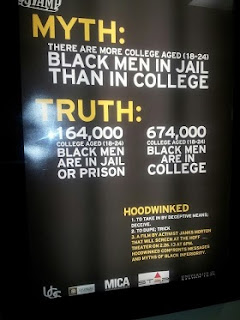"How can you thank a man for giving you what's already yours? How then can you thank him for giving you only part of what's already yours? You haven't even made progress, if what's being given to you, you should have had already. That's no progress." -- Malcolm X, 1964
In 1964, the United States was in the throes of racial conflict. Civil rights activists were leading black Americans and their white allies in a struggle against institutionalized racism, segregation, and disenfranchisement. The situation was bleak, activists were being murdered, the government seemed deadlocked on the issue, and many were losing hope. However, the passage of the Civil Rights Act and the Voting Rights Act set the stage for a positive transformation in race relations in a country that had been plagued by racial tension since its inception.
We have yet to live up to that hoped-for transformation. Almost 50 years later, despite having made demonstrable progress on the race issue, the idea that we live in a "post-racial" society is simply a myth--a myth that was given a boost last week when the U.S. Supreme Courtinvalidated Section 4 of the Voting Rights Act, legislation enacted during the Civil Rights Era which was critical to the enfranchisement of black Americans living in the Jim Crow South. Writing for the majority, Chief Justice Roberts claimed that times had changed since the 1960s, and the section of the law requiring historically racist sections of the country to have changes to their elections laws vetted by the federal government was anachronistic.
Superficially, Roberts' claims ring true. Obviously Americans have made great strides in confronting issues of race since the 1960s. De jure segregation has been eliminated, minority groups have greater access to essential goods and services, and we have seen what many thought would never happen, the election of a black man to the office of the presidency.
Yet looking past the veil of progress which clouds the vision of well-meaning people who believe the issue of racism has been solved, we can easily see that there are many policies and practices in America which perpetuate the inequality of races. The following is a brief rundown of the many fronts on which America continues to fail to live up to its "post-racial" ideal.
The criminal justice system. The starkest example of racial discrimination in America today is the treatment of blacks and other minorities in the criminal justice system. The statistics are astounding. Consider that:
- There are more blacks in the corrections system today -- whether in prison or on probation or parole -- than were enslaved in 1850.
- People of color account for 30% of the total population in America, yet comprise 60% of the prison population.
- Blacks that commit federal crimes on average receive sentences that are ten percent longer than their white counterparts.
- One in three black men will see the inside of a prison in his lifetime.
- Blacks and Hispanics are much more likely to face interaction with police officers, arethree times as likely to be searched during a traffic stop, and four times as likely to be the target of the use of police force.
War on drugs. A good deal of the disproportionate impact of the corrections system on blacks and other minorities is due to the government's relentless, fruitless pursuit known as the Drug War. Consider that:
- Only 14 percent of drug users are black, but blacks constitute 37 percent of those arrested for drug crimes.
- Blacks make up 50% of state and local inmates imprisoned for drug crimes.
- Black youth are ten times as likely as their white counterparts to be arrested for drug crimes, despite the fact that whites are more likely to abuse drugs.
Then you have the proliferation of SWAT team raids used to enforce drug laws and execute search warrants, sometimes resulting in the deaths of innocent people like Jose Guerena andAiyana Jones--both of whom were "brown skinned."

No comments:
Post a Comment